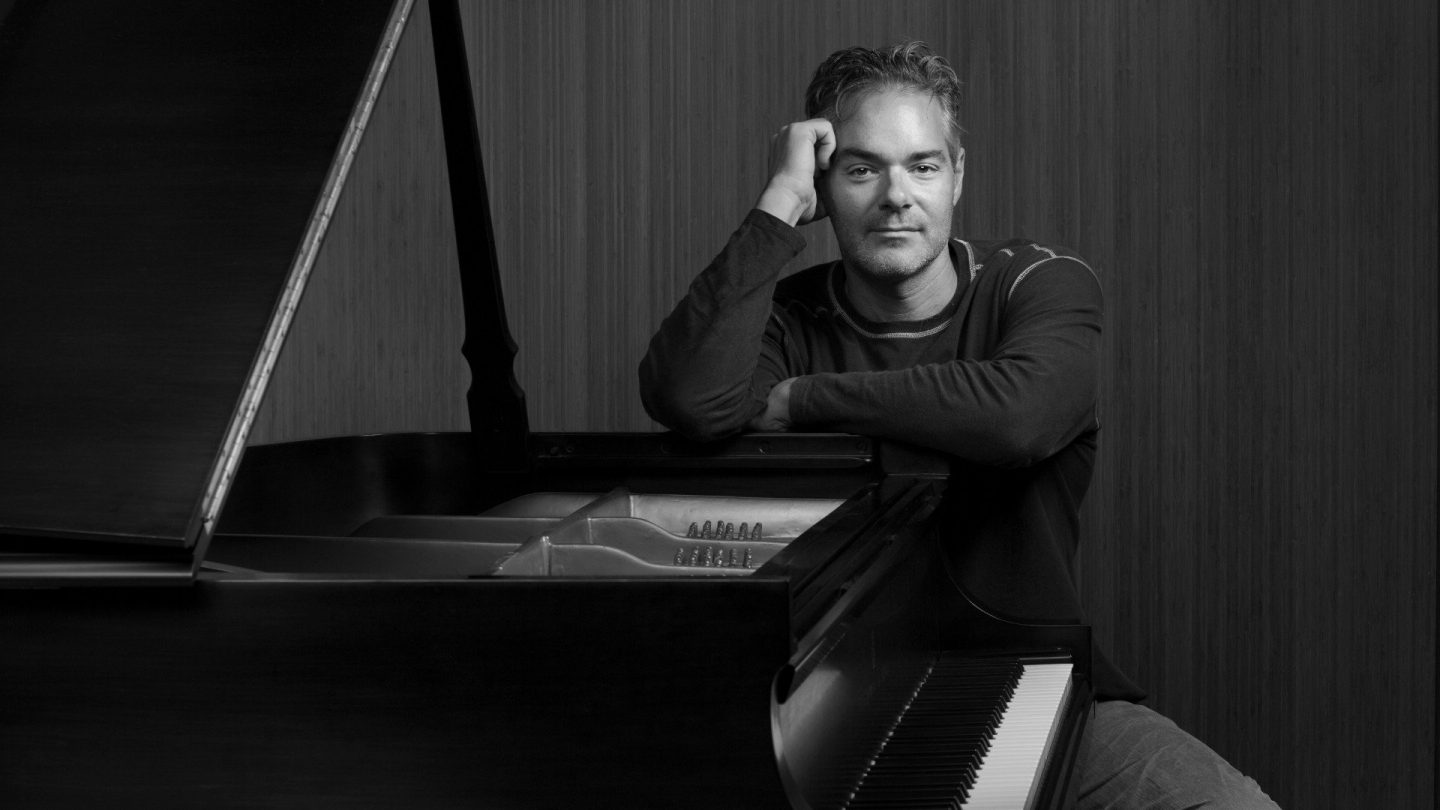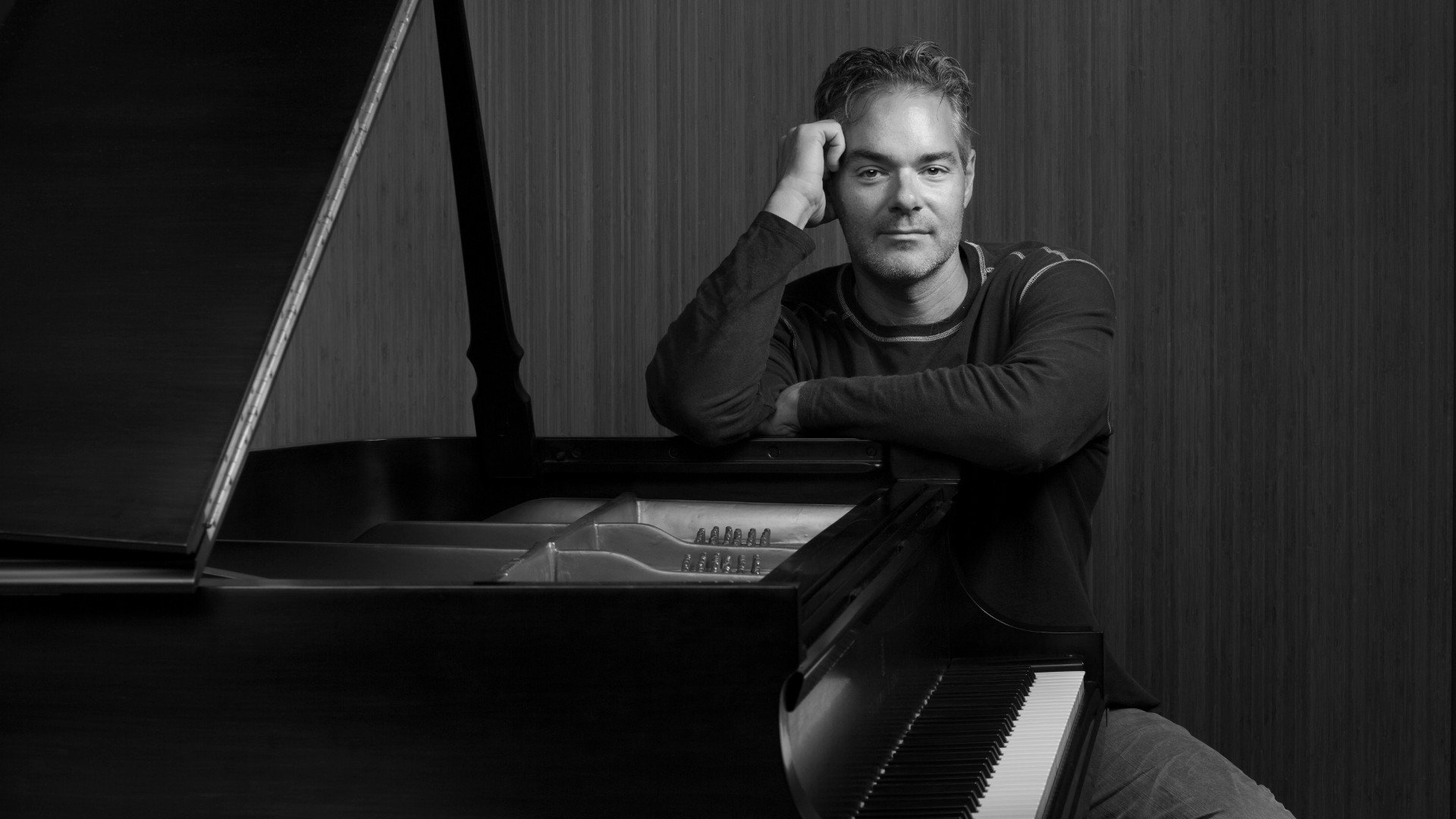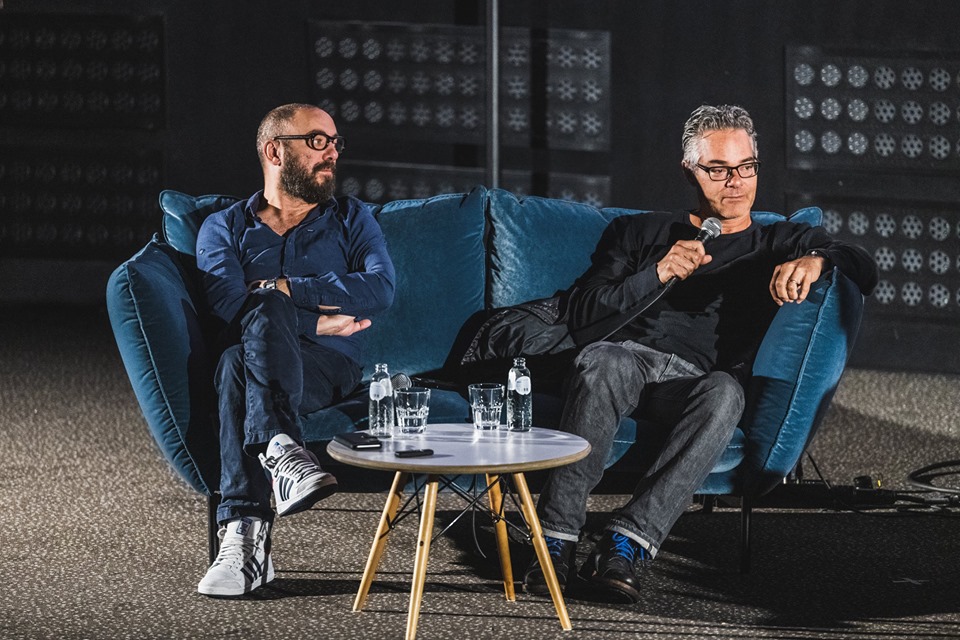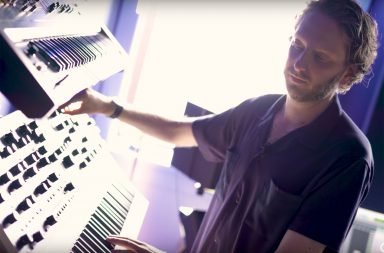This year’s guest of honour at the World Soundtrack Awards has scared many of us more than once—not in person, of course: he is quite a good-looking middle-aged man that you would find walking around the festival’s main venues, anticipating the changing Ghent weather in his The North Face jacket and always seeming up for a laugh. But Marco Beltrami has become over the years one of the most prestigious names to turn to if you need to scare the hell out of an audience. His most famous titles, the Scream saga, Tommy Lee Jones’s westerns, Guillermo Del Toro’s Hellboy, Kathryn Bigelow’s The Hurt Locker and this year’s amazing documentary Free Solo, for which he won the Emmy Award for Outstanding Music Composition for a Documentary, give a pretty exhaustive portrait of how clever, innovative and inspiring a composer he has proved to be.
The latest film he provided the score for is the historical sports drama Ford v Ferrari, which recounts the famous rivalry between the American and the Italian car racing teams at Le Mans in 1966. ‘I’m really proud of this movie,’ Beltrami says. ‘It takes place over the 50s and the 60s and the music had to reflect that. Musically, it was very interesting. We did five recording sessions over five months at Capitol,’ he continues . And even though recording there seemed a good way to be brought back to that time, his idea of an ensemble was far from the image of huge orchestras that used to record at Capitol for Frank Sinatra: ‘I had a band, actually, with no strings involved, just guitars, keyboards, drums, a horn section…’
You wouldn’t imagine such a film without its usual breathtaking car race scenes edited at high pace and carried by the powerful roar of the engines resonating deep inside our ears. But that did not seem to upset Beltrami’s vision of the score: ‘The sound of the cars are of course very important. The race at Le Mans is about twenty-five minutes long, so it’s impossible for just the car sounds to carry alone the trajectory of the emotions […] I have to say that the mixers and all the people who worked in the sound department did a tremendous job and [the unity between the score and the sound effects] worked so well.’
Starring Christian Bale and Matt Damon, Ford v Ferrari, which is expected to hit screens worldwide next month, is the fourth collaboration between Beltrami and director James Mangold (previously, the pair has worked together on 3:10 to Yuma, The Wolverine and Logan). ‘It was a great collaborating process, how I think doing a film score should be: a dialog between a director and a composer, in which the producer should stay clear.’
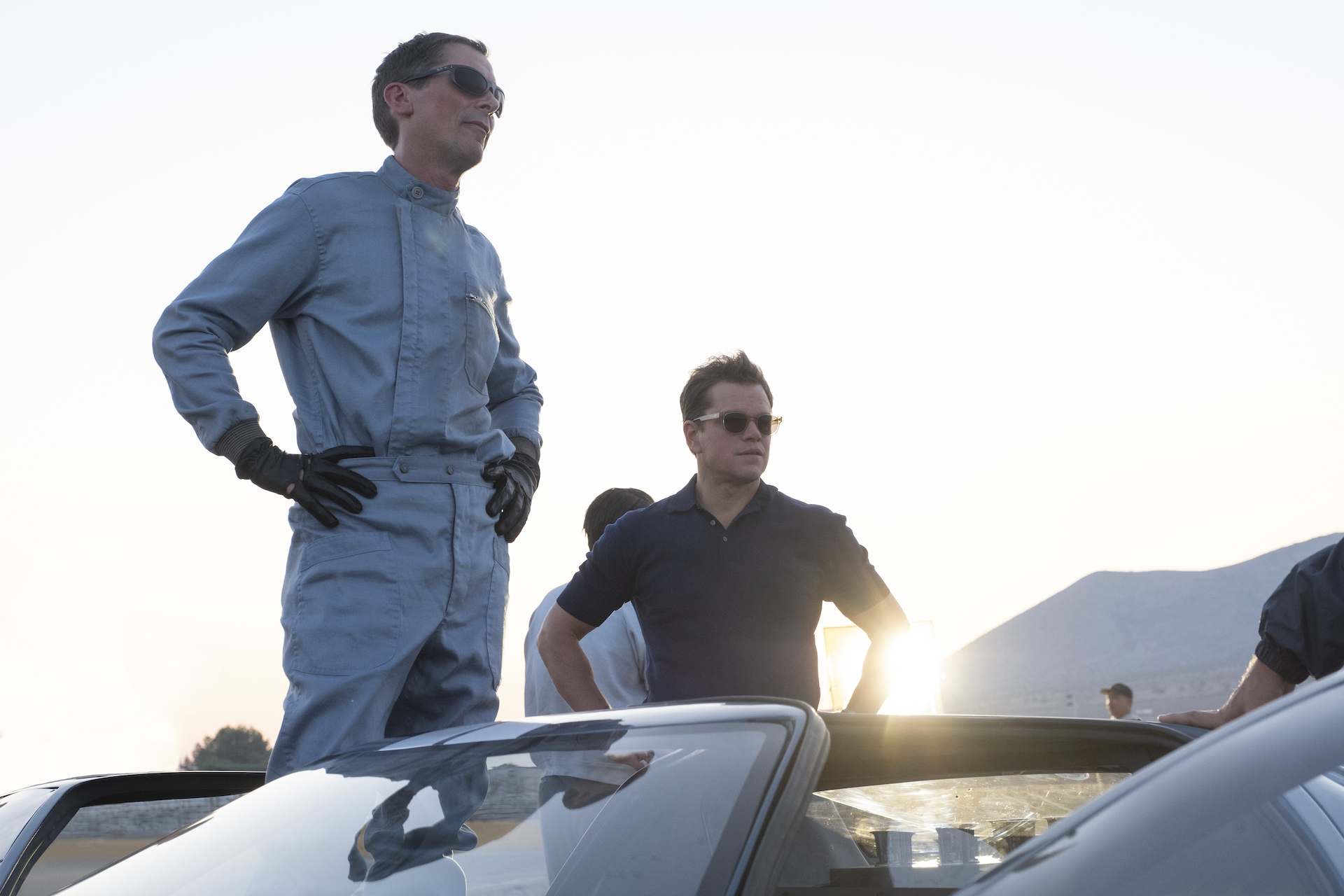
Christian Bale and Matt Damon in Ford v Ferrari — 20th Century Fox Film Corporation. All rights reserved.
Beyond the irony of these last words lie a thousand stories that the vast majority of Hollywood composers have been through, including, obviously, Beltrami. And he knows that he is also making the case for his peers, although rather than fiercely reviving the Henry Fonda hidden inside him, he calmly explains what the situation is like for a lot of composers who work right in the film industry’s epicentre: ‘When there’s a lot of people involved in the movie, that’s really problematic […] Sometimes, studios blame the music for things that are not the music’s fault. Music’s easy to blame because it doesn’t cost much to change it.’ And as often when he talks—we would never know whether it’s just an unknown facet of his vivid mind or if he deliberately thinks right from the moment he starts talking that that’s where the whole commentary would end—he closes the topic with a wit, combined with a sardonic smile. ‘And you know, sometimes… you’re fired.’
Even in the recent years, being a composer as precious and acknowledged as he is, Beltrami could not avoid some traps and pitfalls that Hollywood studios knowingly put on his way. Just this year, the composer had to step aside from Ang Lee’s Gemini Man, on which he was already working, to hand over his seat to Lorne Balfe. Although Balfe’s version is highly enjoyable, we, as much as all film music lovers, would have been curious to see which direction Beltrami would have taken with his score. If we go back a decade, the studios rejected Beltrami’s scores for the computer-animated TMNT (2007) and the cursed western Texas Rangers—from a script by Apocalypse Now‘s writer John Milius,—which Beltrami recalled, in an interview a few years back, as being his favourite score.
But Beltrami would not be Beltrami if his art and experience has not been accepted and praised by the directors he’s worked with, the studios and the audiences. He has even sometimes found himself in the opposite situation, his artistic value leading him to replace composers whose work was rejected or even help directors and composers who were stuck at some point, like he did on the crime film The Drop (2014). The director, Belgium’s very own Michaël R. Roskam, who attended a WSA talk alongside Beltrami, remembers the story, saying that over the post-production process, ‘the movie [he] wanted to make seemed to be falling apart,’ but eventually, after months of getting more and more nervous and after the studio organised some mixedly-received test screenings, ‘Claudia Lewis, who was the head of [Fox] Searchlight at the time, realised that [they] needed to go back to [his] original director’s cut […] but they decided that the music wasn’t helping, so […] they said, “We’re gonna try with another composer,” and [he] didn’t know what was going to happen next.’
Roskam originally asked long-time collaborator Raf Keunen to score The Drop, but the music, although ‘it worked really well and had a great tone,’ didn’t always fit in the scenes, ‘especially for the third act.’ ‘Michael Greenbaum, the producer, said, “I think you should meet this composer, he’s great. I know you want the best film, so here’s someone who could help you, he’s very creative and open-minded.” I didn’t know at that time that it would be Marco.’ The two met and Beltrami decided to step in. ‘I actually thought a lot of [Keunen’s score] did work,’ according to the composer, who was shown a first cut of the film by the studio. ‘Some things could enhance the film a little bit more, towards the end’—the so-called third act—‘but it was just a matter of solving these pieces. And it was pretty clear to me, from the first watching, what to do’ about them. ‘Of course,’ Roskam resumes, ‘it was emotionally hard for me to let Raf go, because he is a friend of mine.’ But having Beltrami come to the rescue ‘was like waking up with the sunlight after you went to bed while there was a thunderstorm […] Marco stayed true to the concept that we had and pushed it to the next level.’ And if this ending was not happy enough, the studio released Roskam’s original cut and he and Keunen resumed their collaboration right after The Drop.
Scoring out-of-the-box films in Hollywood like The Drop has always been Beltrami’s favourite playground. His first film score was no less than the horror classic Scream, which he did right after a one-year program at the USC Thornton School of Music, where he studied under none other than Jerry Goldsmith. ‘Jerry taught me a lot of important ideas. He was all about being as simple as possible for the ideas that you’re trying to achieve, as well as figuring out a basis for the score. It’s not random cues that you combine together, it’s trying and finding the acorn of the tree where the score can grow from.’ A precious advice, to which more would soon add up: when Wes Craven, who already was one of America’s masters of horror at that time, hired him, he ‘wasn’t familiar with horror films, so [he] approached it with anxiety and fear. Beltrami ‘was very genuine with [his] emotions about it, not being familiar at all with the horror conventions.’ And Craven encouraged him to follow that instinct. If Goldsmith was the master, ‘Wes was [his] mentor.’ ‘He took me under his wing […] Actually, Scream was the first horror movie I had ever seen, so I learned it as it went.’ ‘He was a veteran at this and I was a newbie,’ he says, willingly admitting that he had ‘the tendency to over-write’: ‘I wanted to put all the emotions into the music just like in those silent movies […] And Wes often told me, “we don’t need music here, the killer’s gonna jump out of the doorway. So we would set up this anticipation and maybe go silent after that, so the audience would be a bit more off-balanced.’ The rest is film music history. The film’s main theme, Sidney’s Lament, has now become a cornerstone in horror film music, and Beltrami just had one of the most exciting and impressive breakthroughs of the profession. But more importantly, it was around that time that the composer met the man who would become his ‘right hand’ and his ‘first listener,’ Buck Sanders. From that moment on, the pair would be inseparable.
Scream earned Beltrami a huge reputation in scoring horror, and the guy who never saw a horror film before 1996 would quickly compose chilling tunes for Guillermo Del Toro (Mimic, Blade II, Hellboy), Robert Rodriguez (The Faculty) and, of course, the Scream sequels. More recently, Beltrami scored the Netflix oddity Velvet Buzzsaw, Jordan Peele’s revival of The Twilight Zone and John Krasinski’s acclaimed debut feature A Quiet Place. The latter project was quite appealing to Beltrami as it was dealing with deadly monsters with ultra-sensitive hearing, resulting in an almost entirely silent film. According to the composer, ‘it was very experimental. [Since] it was going to be a silent movie for the most part, and any little thing that you do, the score is gonna draw attention to itself, so it had to work with the sound effects.’ As a result, Beltrami used a careful blend of flatter and ringing sounds, and went on to create textures with unusual instruments like a crystal wine glass. If fantasy and horror are the genres for which he is best remembered, it is also because they are quite representative of his experimentations with emotions, sounds and instruments. From the lyrical singing in Scream to the crazy waltz for solo violin featured in Snowpiercer, these genres never fail to arouse his creativity and to enrich his stylistic lexicon.
As with all WSA’s guests of honour, Marco Beltrami was dedicated an album, Music for Film, featuring a selection of suites—arranged by Swedish composer and producer Mikael Carlsson—from his most significant scores, performed by the Brussels Philharmonic Orchestra and conducted by Dirk Brossé. And it is only until you see the orchestra perform those pieces live that you actually realise how precise, thoughtful and inventive Beltrami is as a composer. Watching the 80-piece orchestra perform the epic theme for Gods of Egypt—with a motif written in the most classic peplum style that would remain so strongly stuck in your head that you would die to see the film, although it looks like an Ancient Egypt Transformers rip-off—was as hair-rising as seeing the same orchestra go silent just to let the single wine glass from A Quiet Place sing. The Belgian conductor admits that Beltrami’s work ‘is quite complex [to perform on stage], balance-wise. Some of the pieces really needed help with the dynamic […] When [Marco] came at the rehearsal, the sound was awful! He literally said, “Is this the same orchestra you recorded the album with?” [So they] discussed a lot about balance and amplification issues.’
One of the most wonderful suites of the album to listen to, which the Brussels Philharmonic Orchestra also performed in concert, is the one from the Tommy Lee Jones western, The Homesman, probably because they managed to revive a sound that was created under diametrically opposed circumstances. For this particular film, Marco Beltrami and Buck Sanders pushed the boundaries of experimentation to places they had never been before. The story takes place in the Western plains, and the two music partners ‘knew wind was gonna be a big part’ of the score, so they ‘thought about the possibility of using it as an instrument.’ The memory is still very present in Beltrami’s mind, and we can only imagine how, given the extraordinary excessiveness of the whole process. ‘We started experimenting with Aeolian harps, which you put on an open window, and then the wind makes the strings resonate. Then, we went on to building a piano, like a wind harp, on top of the hill where my studio is. The piano wires were going 250ft up the hill, capturing the sounds of the wind that would come through, and we used that as an element of the score.’
Of course, there was no room on the stage for Aeolian harps, let alone for a piano with wires held that high above the ground, so the orchestra used a wind machine to recreate that sound, which worked beautifully. But when they did The Homesman, the film inspired Marco and Buck something more than just this little thing of creating instruments: ‘[The characters] lived in mud, huts, places that they’d never clean. So our original thought was that we would go and record this score in one of these huts’ to avoid the ‘beautiful, perfect sound that you have in a studio […] We weren’t able to record in New Mexico where they shot, but we did record outside the studio. It gave the score a really different tone and worked beautifully… Except for the airplane noises and the ducks quacking from the house next to me,’ the composer laughingly concludes. And naturally, all those sounds went straight up into the score without being processed or treated.
Although he came to the western later in his career—partially because of the genre’s rare representations in the last two decades—he feels that he can express his art as freely as with horror. He even mentions western as having an influential role when still trying to become a composer. ‘I thought Ennio Morricone had a great melodic sense and I loved how he took non-traditional sounds, non-instrumental sounds, things that you wouldn’t normally associate to being musical […] It really appealed to me.’ You bet it did. And Tommy Lee Jones turned out to be the Sergio Leone to his Morricone, being described by the composer, who scored his first feature The Three Burials of Melquiades Estrada (2005) before The Homesman, as a filmmaker who ‘definitely has an idea’ regarding the score, but who ‘also loves hearing new things.’
And new things, you have probably get it by now, is what Beltrami lives for. What he does not live for, however, is sound design. ‘It was just annoyances that I had to deal with,’ as he put it. ‘Sound was my enemy until I did The Hurt Locker.’ When Kathryn Bigelow came to offer him to score the film that would win six Oscars and earn Beltrami and Sanders a nomination, he only approached it from a musical perspective. ‘She wanted less than ten minutes of music in the movie, maybe like eight minutes. But I made a mistake: I was inspired by other scenes and then […] she wanted score everywhere. In the end, the eight minutes turned out to be sixty-five minutes of music.’ He relied on the characters to overcome his fear of seeing his music drowned inside the ocean of sound design: ‘To get to do this quasi documentary music was en eye-opening experience for me. Can sound be music, and vice versa? That was the first time I had to treat both together, like it’s the hand and the glove. With the sound guy, Paul Ottosson, we would share ideas.’ But although he became sensitive to the importance of the relationship between music and sound design in such a film, he certainly did not try to begin some kind of Hans Zimmer-like experimentations. And one last time, he would wriggle out of the situation: ‘I think the smartest thing I did to keep the music strong was that [Ottosson’s] wife played erhu, so I got her to play on the score, that way he wouldn’t try to bury it.’
Written by Valentin Maniglia. Edited by Marine Wong Kwok Chuen.
